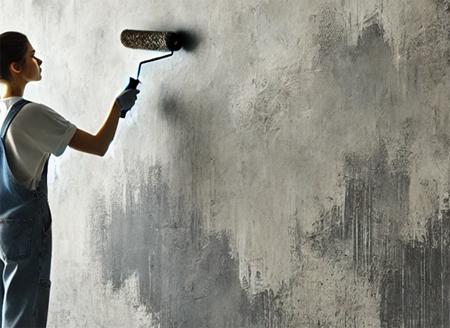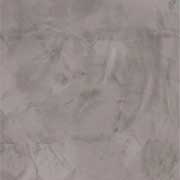
Creating a concrete finish can transform any space, offering a sleek, modern look without the hassle and expense of real cement.
With the right materials and techniques, you can achieve a stunning effect that mimics the raw beauty of concrete. Here’s everything you need to know, from selecting the right paint to a step-by-step tutorial.
Paint Features to Look for:
- Texture: Look for textured paints or additives that can be mixed into standard paint to mimic the gritty feel of concrete.
- Color: Opt for shades of grey and taupe that closely resemble natural concrete. Some brands offer specific “concrete grey” tones.
- Matte Finish: A matte or flat finish will enhance the stone-like appearance, avoiding the shine of gloss or satin paints.
- Ease of Application: Select paints that are easy to work with, especially those labeled for faux finishes or textured applications. These often come with clear instructions and tools designed for the task.
- Durability: Ensure the paint is durable and easy to clean, especially for high-traffic areas or walls prone to marks and scuffs.
Paint vs. Cement Wallpaper
While both paint and a photo decal image can achieve a similar aesthetic, there are key differences:
- Flexibility: Paint allows for more customization in terms of texture and color variation, whereas wallpaper offers a consistent look.
- Durability: High-quality paint can be more durable and easier to repair than wallpaper, which may peel or tear over time.
- Application: Painting requires a bit more skill and preparation but avoids the potential for air bubbles and misalignment common with wallpaper installation.
- Cost: Generally, paint is more cost-effective, especially for large areas, though high-end textured wallpapers can be quite expensive.
Step-by-Step DIY Guide:
- Preparation:
- Clean the wall thoroughly to remove dust and grime.
- Repair any holes or cracks with filler and sand smooth.
- Apply a primer suited for your wall surface to ensure even paint adhesion.
- Base Coat:
- Apply a base coat of grey or taupe paint using a roller. This will be the background color.
- Allow the undercoat to dry completely.
- Textured Layer:
- Mix a textured additive into your paint or use a pre-mixed textured paint.
- Use a trowel or spatula to apply the textured paint in random, sweeping motions. This mimics the uneven, organic texture of cement.
- For a more subtle texture, you can use a sponge or rag to dab the paint onto the wall.
- Detailing:
- Once the textured layer is dry, use a dry brush technique to add depth. Dip a dry brush into a darker shade of grey and lightly brush over raised areas.
- For added realism, create faint, irregular lines with a fine brush to simulate cement seams.
- Finishing Touches:
- If desired, seal the wall with a clear matte varnish to protect the finish and enhance durability.
Cost Considerations
Creating a concrete-like finish is a cost-effective way to achieve a high-end look. Here’s a breakdown of potential expenses:
- Primer and Base Paint: $30-$50 per gallon.
- Textured Paint or Additives: $20-$40 per gallon.
- Tools (rollers, brushes, trowels): $10-$30.
- Sealant (optional): $20-$40.
In total, expect to spend between $80 and $160 for an average-sized wall.
Last Updated June 23, 2024







